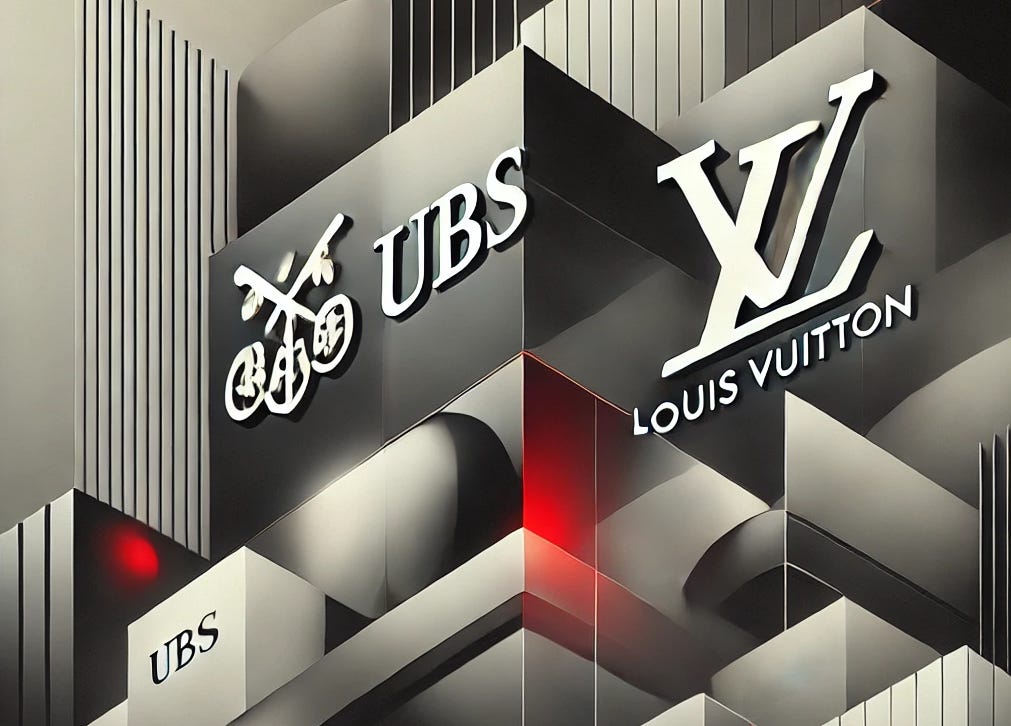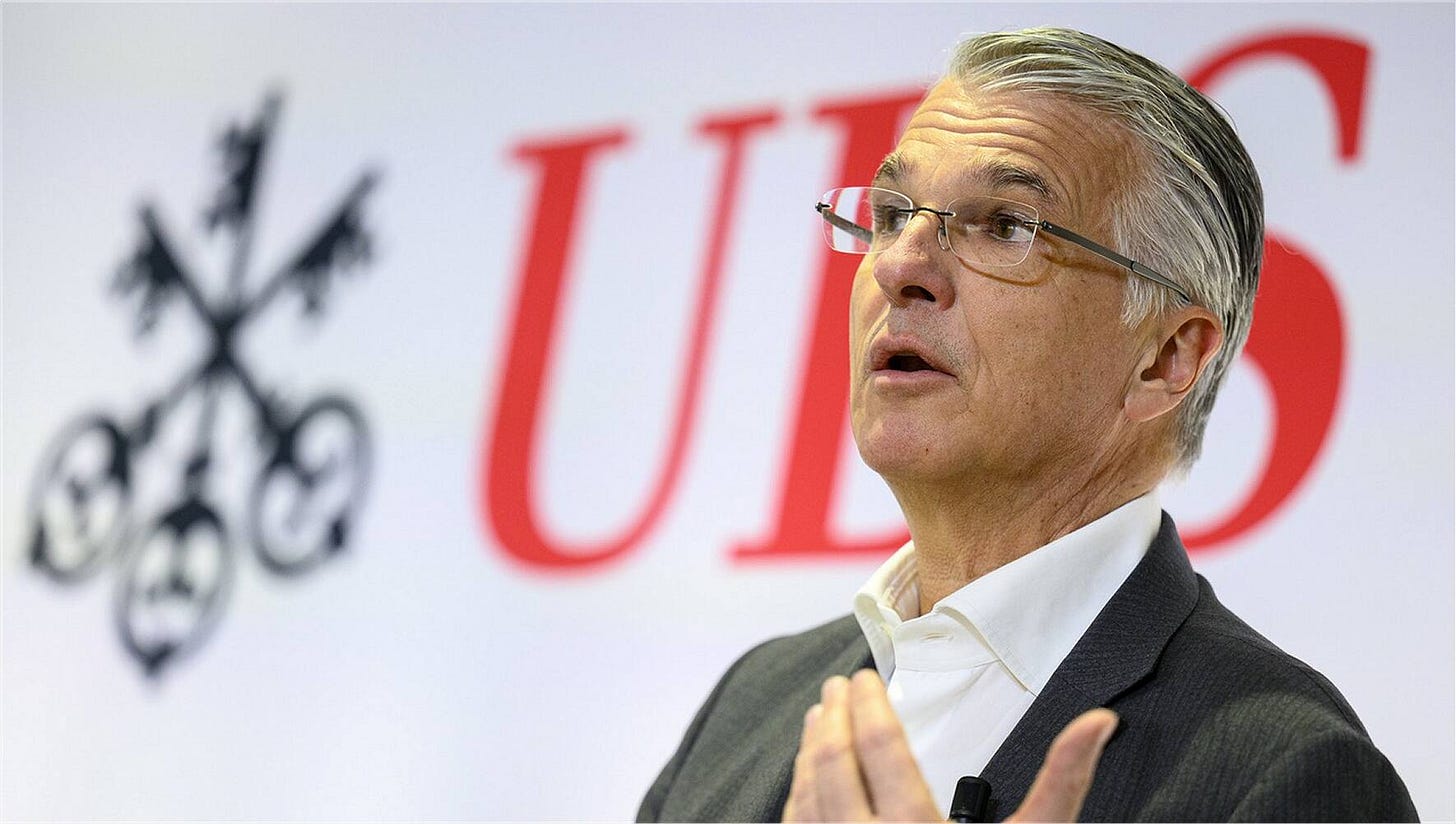Dear Insider,
Today is a bit different - as you can see.
This edition of The Swiss Insider comes with “deep dive” analysis on a special topic in Swiss business:
➡️ …the latest brand image campaign from Switzerland’s one and only mega-bank, UBS.
Why should you care about adverts from UBS?
Simple: where UBS goes, Switzerland is likely to follow.
Put another way - there is a symbiotic relationship between the country’s last systemic relevant bank and its economy as a whole.
Take a look…
Ian
💡PS: Feel free to connect with me on LinkedIn and on X. Or simply reply to this email and share your feedback.
Thank you!
UBS crafts a campaign
UBS launched its new brand image campaign - “Banking is our craft” - on 23 January 2024 - right in the middle of WEF week in Davos.
The timing was not a coincidence.
After a chaotic year and a controversial takeover of Credit Suisse, Switzerland’s biggest bank was ready for a fresh start. It did so during the country’s highest profile event - the World Economic Forum. And it did so with a clear strategic intent.
UBS wanted get into people’s heads.
Its “A bank like Switzerland” campaign the year before had been overt in linking UBS to the country’s heritage and values.
But that wasn’t good enough. And besides - its message was aimed more at Swiss people, reassuring them that UBS was NOT a big, bad Wall Street bank.
It was a defensive move.
This new campaign needed to go “on offence.”
With the “Banking is our craft” messaging - and the support of Publicis Groupe, and the brand consulting firm Prophet , UBS set out to do three things:
Emphasize the “personal touch”
Evoke an organic feeling
Elicit the desirability often linked to handmade goods
The final point is why this campaign - more than anything else - mirrors the messaging of luxury brand Louis Vuitton.
An artisanal approach
UBS’s choice of luxury style and focus made perfect sense.
Just like it makes sense for a luxury brand like Louis Vuitton to put the spotlight on the handwork in its bags and garments.
Bernard Arnault’s flaship brand evokes a sense of quality and costliness by showing the finer details of hand cutting and stitching.
UBS knew that using the word “craft” could inspire positive feelings about its employees and its brand - the hard-working craftsmen (and women) who create enduring wealth.
There is also an unspoken message in the word “craft” - Swissness.
As a country that both produces and consumes a large amount of handmade, intricately-formed items - people in Switzerland (and foreigners too) appreciated well-made things.
Sergio Ermotti and co. also realized that their size was a liability.
“Too big to fail” had a bad ring to it - the last word in particular. By emphasizing the idea of “handmade”, artisanal work, the behemoth could bring itself down to the (still elevated) level of its client base.
Louis Vuitton’s brand image video highlighting the craftmanship behind its products
Why it (almost) works
UBS Group Chief Marketing Officer and Head Brand Management John McDonal got some things right with this line of attack.
Language-wise the campaign manages to imply Swissness without overplaying its hand.
Although the word “banking” still appears in the tagline, the campaign helps turn the focus away from the “institutional” side of the business.
The structure of the tagline allows room for “personalization” - meaning: a rotation of phrases (such as “investing” / “wealth management” etc to replace “banking”. This hints at the same kind of “tailor-made” theme that lurks behind the main message.
Being aware of UBS’s image as an “all-encompassing” universal bank - and international liability - McDonald and team managed to “pare down” the ubiquity of the company.
A master craftsman at work? UBS CEO Sergio Ermotti has a big job at hand…
Where “the craft” falls short
On several counts, however, UBS’s campaign clearly falls short.
They also highlight one of the main differences between LVMH and UBS.
➡️ A lack of real “personalization”
Louis Vuitton has hundreds of products - and hundreds of craftsmen and women.
Just like UBS has thousands of bankers.
The difference between the two is that Louis Vuitton puts their people front and center - along with a few celebrities, to be sure.
UBS, on the other hand, uses stock photos throughout its campaign. So much for the truly “personal touch.”
➡️ No tangible “proof”
Craftspeople make things. And every time you walk by a shiny Louis Vuitton storefront, the evidence of the brand’s handwork stands out - front and center.
In banking - the “craft” is harder to show.
Numbers? Sure - they look nice on a powerpoint. But the ones that count are hidden away in the client’s portfolio - away from the public eye.
Trying to talk about a craft with tangible evidence is tough.
➡️ A tentative look at history
Craftmanship as a term evokes the past — when everything was done “à la main”.
This holds a certain danger for UBS. Its takeover of Credit Suisse wiped out a bank steeped in Swiss tradition.
Trying to harness that emotion is tricky for UBS. The recent memory of its shark-like takeover of another big (and failed) bank makes using history a dangerousl.
The lessons
The case study of UBS’s brand campaign teaches us a few key things - about the good (and the bad) of business in Switzerland.
Size is an issue - Understandably, the bigger the brand, the more cautious it becomes. A mega company (and a bank) like UBS will never dare too much in its brand positioning.
That is why the campaign comes across as “half-done”. Yes, it speaks the “luxury language” but it fails to connect.
Time and again, Swiss companies have gone “big” and tripped up. UBS itself once aimed to be the world’s No. 1 investment bank. That ended in 2008.
Being big, but staying small at the same time is the safer route - but less inspiring over the long haul.
Tradition still reigns supreme - In the world of luxury and “high-end” tradition is a strong pull.
Switzerland plays this game as well as anyone. The trick, however, is to “hark back” to the “good old days” - while skipping over unpleasant memories.
Nostalgia can be powerful and pedigree is to be valued - but the best kind is authentic and cannot be created from one single campaign.
“Birds of a feather…” - The world of luxury is an insular group.
The fact that UBS would borrow for its brand from Louis Vuitton or another top luxury goods brand makes perfect sense - and illustrates again the timeless saying: “Birds of a feather flock together.”
It also signals that the world’s largest wealth manager is doubling down on what it does best - managing money for the wealthy.
This is a good sign for Switzerland as a whole.
But as many other banks know all too well - there is only so much “growth juice” in the boring old business of helping rich people stay rich.
The bigger trick will if UBS can find a way to fully bring its craft into the 21st century.
There is more!
I also compile focused lists of the most important businesses in Switzerland - family office firms, banks and law firms in crypto, venture capital funds and more.
Check it out - and if you find it helpful, feel free to share! 👍🏻






